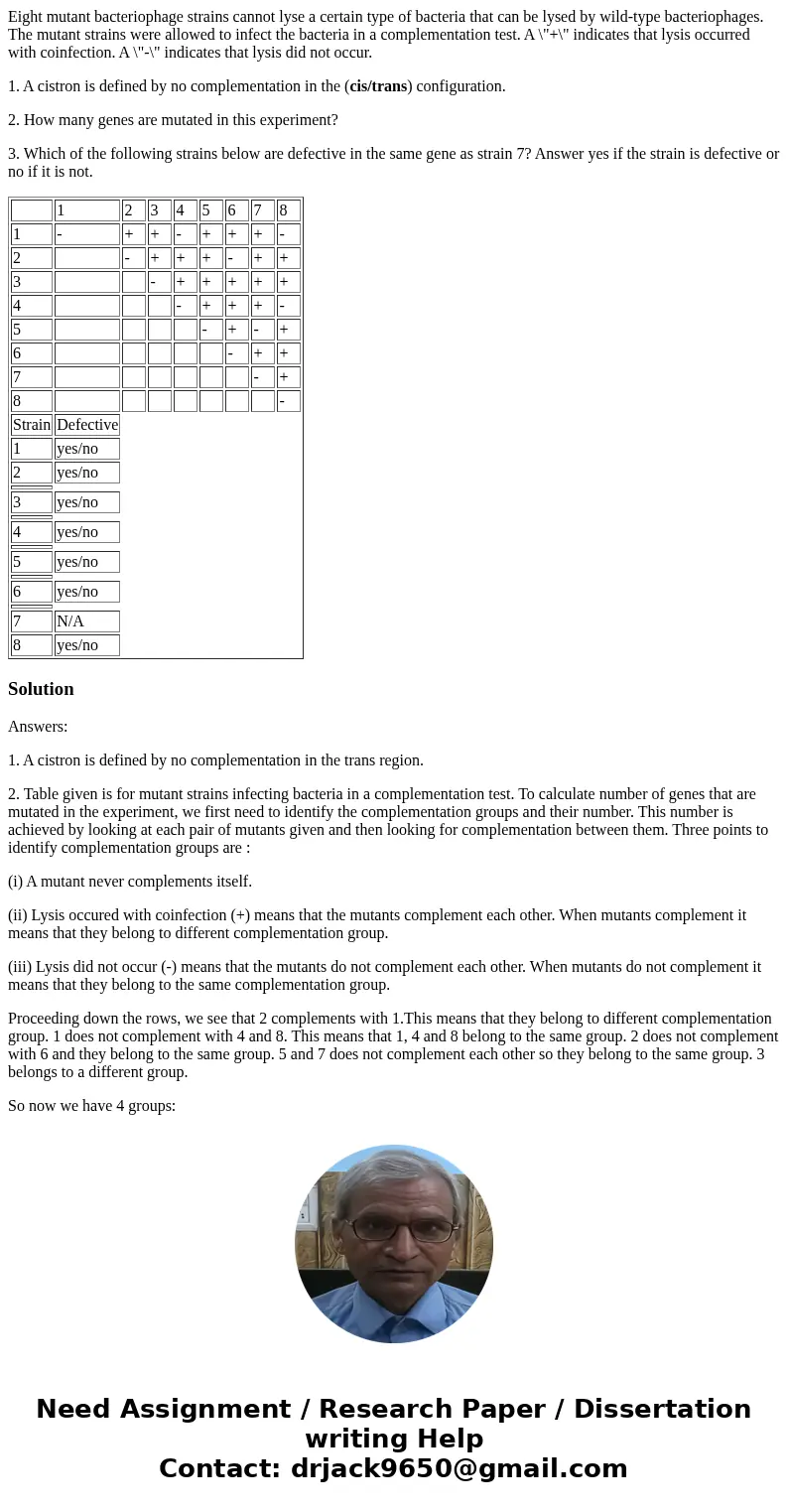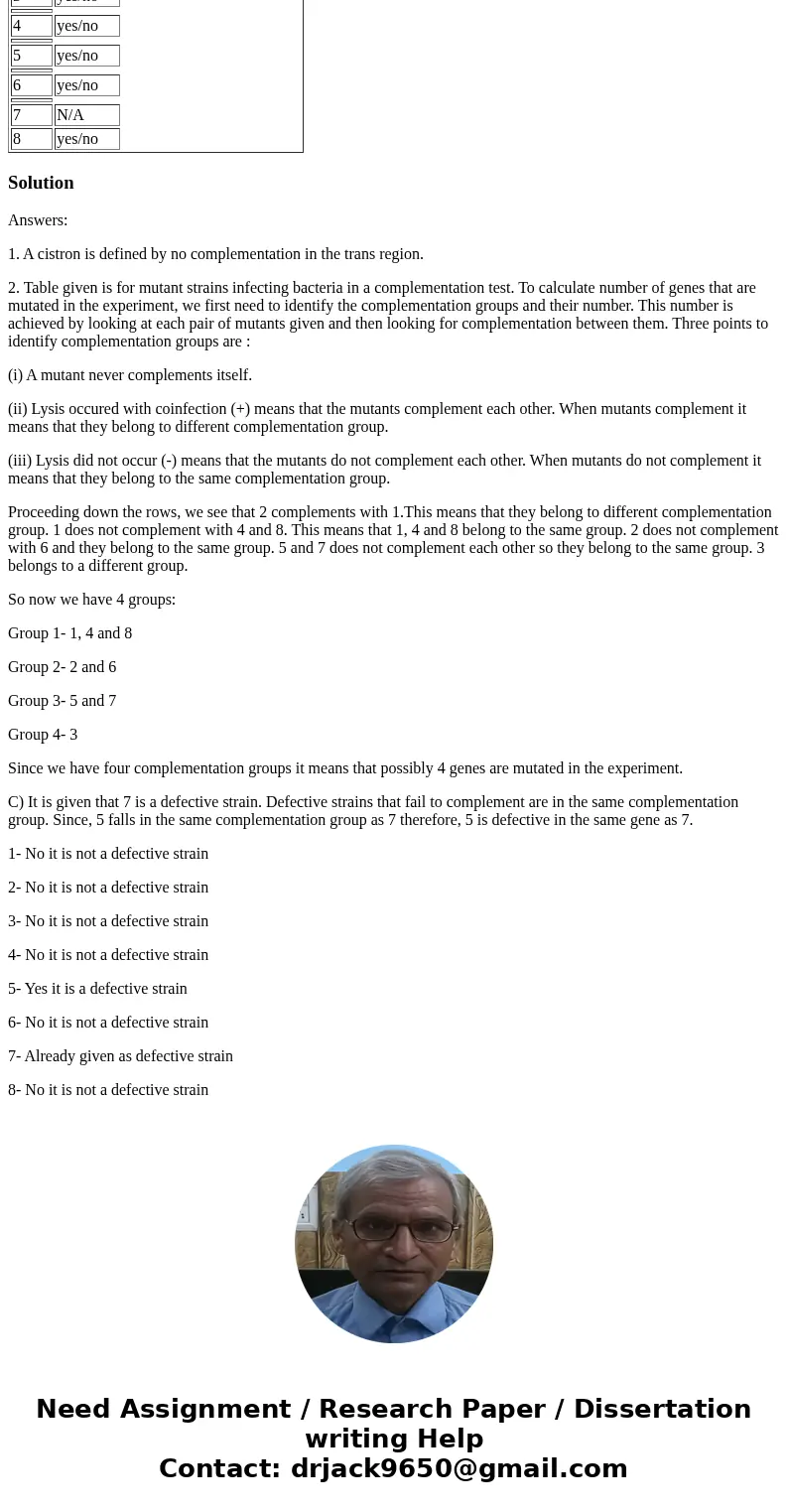Eight mutant bacteriophage strains cannot lyse a certain typ
Eight mutant bacteriophage strains cannot lyse a certain type of bacteria that can be lysed by wild-type bacteriophages. The mutant strains were allowed to infect the bacteria in a complementation test. A \"+\" indicates that lysis occurred with coinfection. A \"-\" indicates that lysis did not occur.
1. A cistron is defined by no complementation in the (cis/trans) configuration.
2. How many genes are mutated in this experiment?
3. Which of the following strains below are defective in the same gene as strain 7? Answer yes if the strain is defective or no if it is not.
| 1 | 2 | 3 | 4 | 5 | 6 | 7 | 8 | |
| 1 | - | + | + | - | + | + | + | - |
| 2 | - | + | + | + | - | + | + | |
| 3 | - | + | + | + | + | + | ||
| 4 | - | + | + | + | - | |||
| 5 | - | + | - | + | ||||
| 6 | - | + | + | |||||
| 7 | - | + | ||||||
| 8 | - | |||||||
| Strain | Defective | |||||||
| 1 | yes/no | |||||||
| 2 | yes/no | |||||||
| 3 | yes/no | |||||||
| 4 | yes/no | |||||||
| 5 | yes/no | |||||||
| 6 | yes/no | |||||||
| 7 | N/A | |||||||
| 8 | yes/no |
Solution
Answers:
1. A cistron is defined by no complementation in the trans region.
2. Table given is for mutant strains infecting bacteria in a complementation test. To calculate number of genes that are mutated in the experiment, we first need to identify the complementation groups and their number. This number is achieved by looking at each pair of mutants given and then looking for complementation between them. Three points to identify complementation groups are :
(i) A mutant never complements itself.
(ii) Lysis occured with coinfection (+) means that the mutants complement each other. When mutants complement it means that they belong to different complementation group.
(iii) Lysis did not occur (-) means that the mutants do not complement each other. When mutants do not complement it means that they belong to the same complementation group.
Proceeding down the rows, we see that 2 complements with 1.This means that they belong to different complementation group. 1 does not complement with 4 and 8. This means that 1, 4 and 8 belong to the same group. 2 does not complement with 6 and they belong to the same group. 5 and 7 does not complement each other so they belong to the same group. 3 belongs to a different group.
So now we have 4 groups:
Group 1- 1, 4 and 8
Group 2- 2 and 6
Group 3- 5 and 7
Group 4- 3
Since we have four complementation groups it means that possibly 4 genes are mutated in the experiment.
C) It is given that 7 is a defective strain. Defective strains that fail to complement are in the same complementation group. Since, 5 falls in the same complementation group as 7 therefore, 5 is defective in the same gene as 7.
1- No it is not a defective strain
2- No it is not a defective strain
3- No it is not a defective strain
4- No it is not a defective strain
5- Yes it is a defective strain
6- No it is not a defective strain
7- Already given as defective strain
8- No it is not a defective strain


 Homework Sourse
Homework Sourse